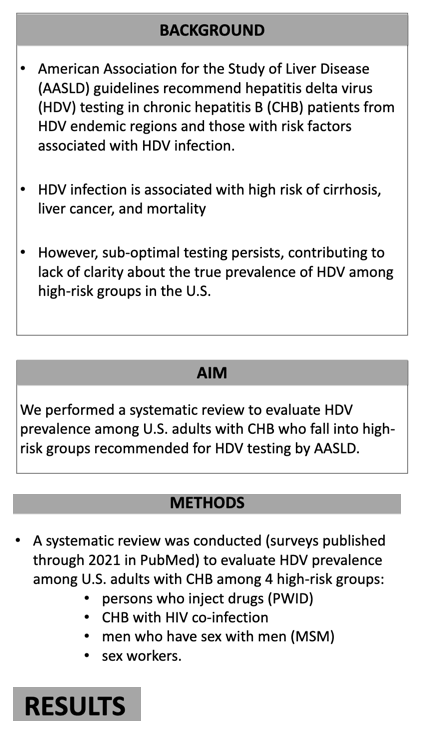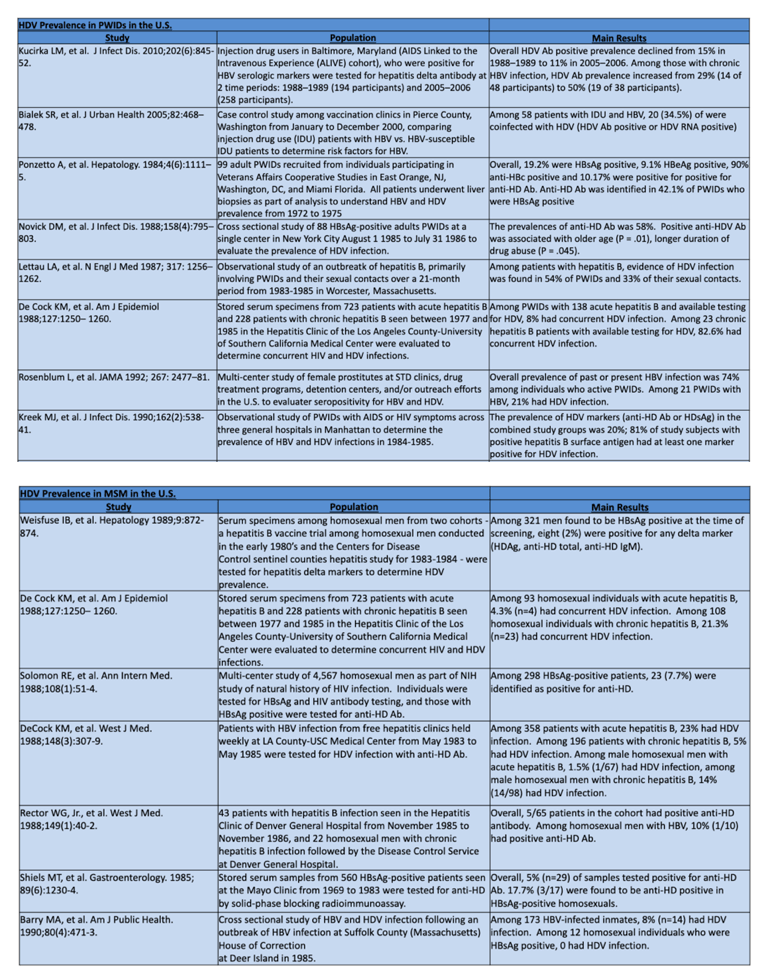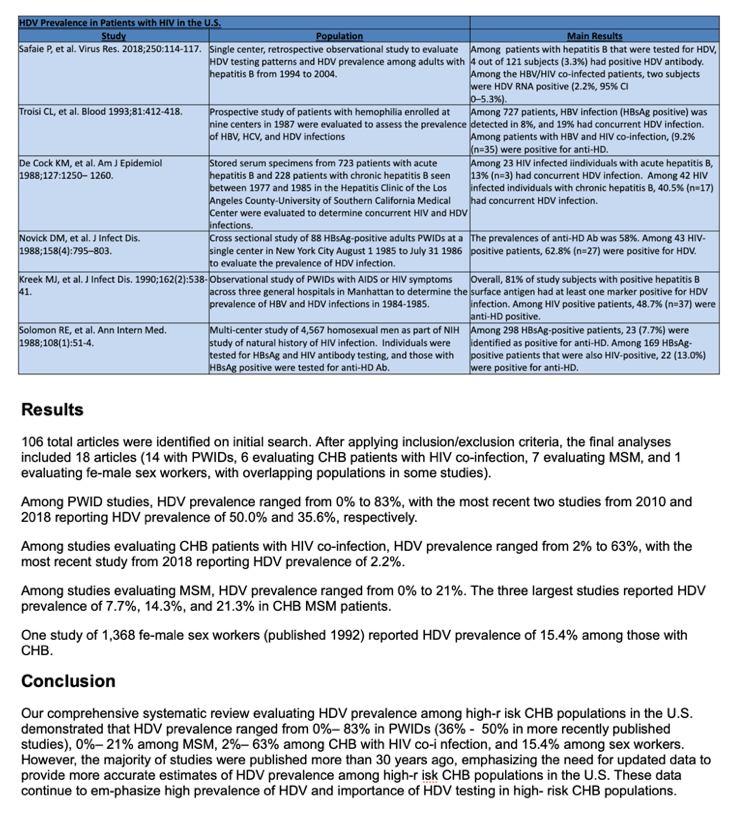 |
 |
 |
| |
HDV Prevalence Ranges Widely in US High-Risk Groups: Newer Data Needed
|
| |
| |
AASLD-The Liver Meeting, November 4-8, 2022, Washington, DC
Mark Mascolini
Systematic review of the literature found wide-ranging estimates of hepatitis delta virus (HDV) prevalence among high-risk groups in the United States [1]. That variation may reflect lack of standardized testing for HDV and guidance on whom to test, suggested researchers from Stanford University, who also noted that most studies they reviewed were over 30 years old.
Research ties infection with HDV-a sometime companion of HBV-to heightened risk of cirrhosis, liver cancer, and death compared with HBV infection alone. AASLD guidelines call for HDV testing in people with chronic HBV infection living in endemic regions and in high-risk groups. But the Stanford team believes HDV testing remains suboptimal, and that contributes to a fuzzy prevalence picture in high-risk US residents.
To get a broader view of HDV prevalence in high-risk groups, the researchers systematically reviewed prevalence studies published through 2021 in four groups: people who inject drugs, people with chronic HBV infection and HIV coinfection, men who have sex with men (MSM), and sex workers. An initial search turned up 106 articles, which the researchers narrowed down to 18 that appeared to contain reliably collected data useful to the review. Fourteen articles involved drug injectors, 7 MSM, 6 chronic HBV/HIV-coinfected people, and 1 female sex workers. (Some studies included more than one high-risk population.)
HDV prevalence ranged from 0 to 83% in 14 studies of drug injectors with chronic HBV. The two most recent studies, from 2010 and 2018, reported prevalence rates of 50.0% and 35.6%.
The 7 studies of MSM charted HDV rates of 0 to 21%, with the 3 largest studies recording rates of 7.7%, 14.3%, and 21.3% in MSM with chronic HBV.
In the 6 studies of people with chronic HBV and HIV, HDV prevalence varied from 2% to 63%. The most recent study, published in 2018, set HDV prevalence at 2.2%.
In a study of 1368 female sex workers published in 1992, HDV prevalence stood at 15.4% among sex workers with chronic HBV.
The researchers cautioned that most of the studies worth including in this systematic review were published more than 3 decades ago. As the authors say, the hepatitis community needs new studies of HDV prevalence in high-risk populations to give a cleaner look at where prevalence stands today. In an ideal world, a select group of hepatologists, public health experts, infectious disease specialists, and community members would get together to formulate advice on how to conduct these prevalence studies in a way that yields reliable, useful data consistent from study to study.
Collaborators who produced this systematic review suggest that wide variation in prevalence estimates made to date may reflect lack of an HDV standard of care, lack of standardized HDV testing, and lack of guideline clarity on whom to test. In other words, a lot of work remains to understand HDV prevalence, testing, and care.
Reference
1. Wong RJ, Brosgart CL, Wong SS, et al. Estimating hepatitis delta prevalence among high risk populations in the United States: a systematic review. AASLD-The Liver Meeting, November 4-8, 2022, Washington, DC. Abstract 1126.



|
| |
|
 |
 |
|
|